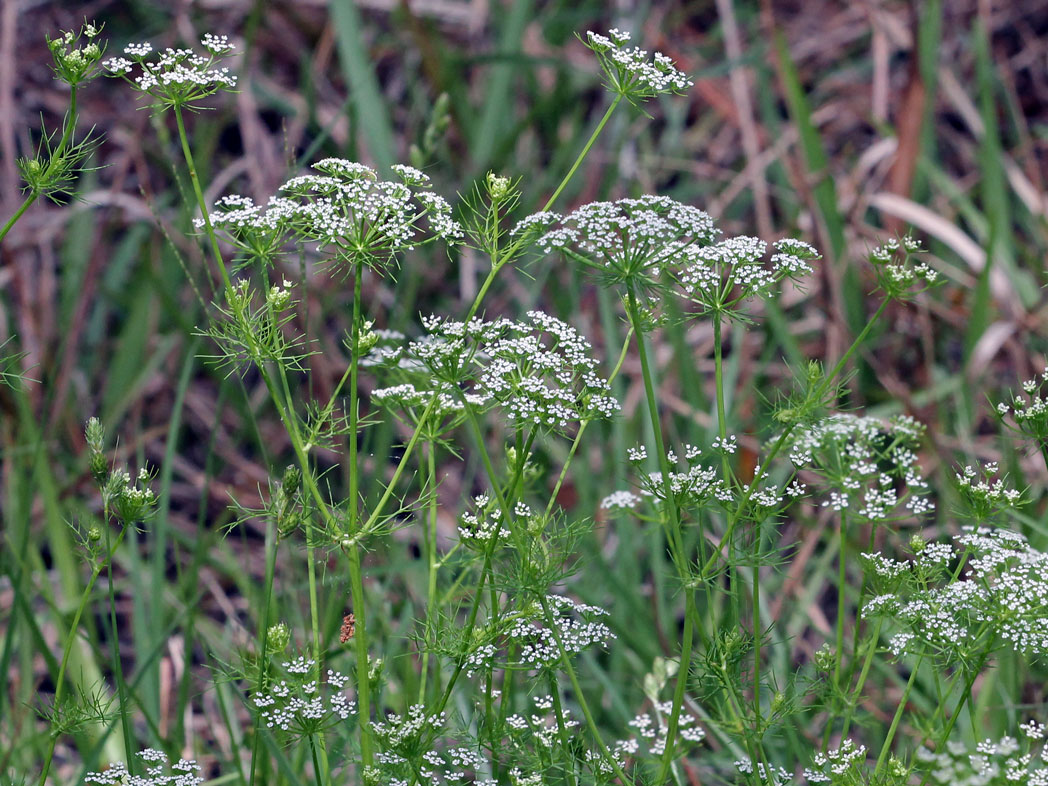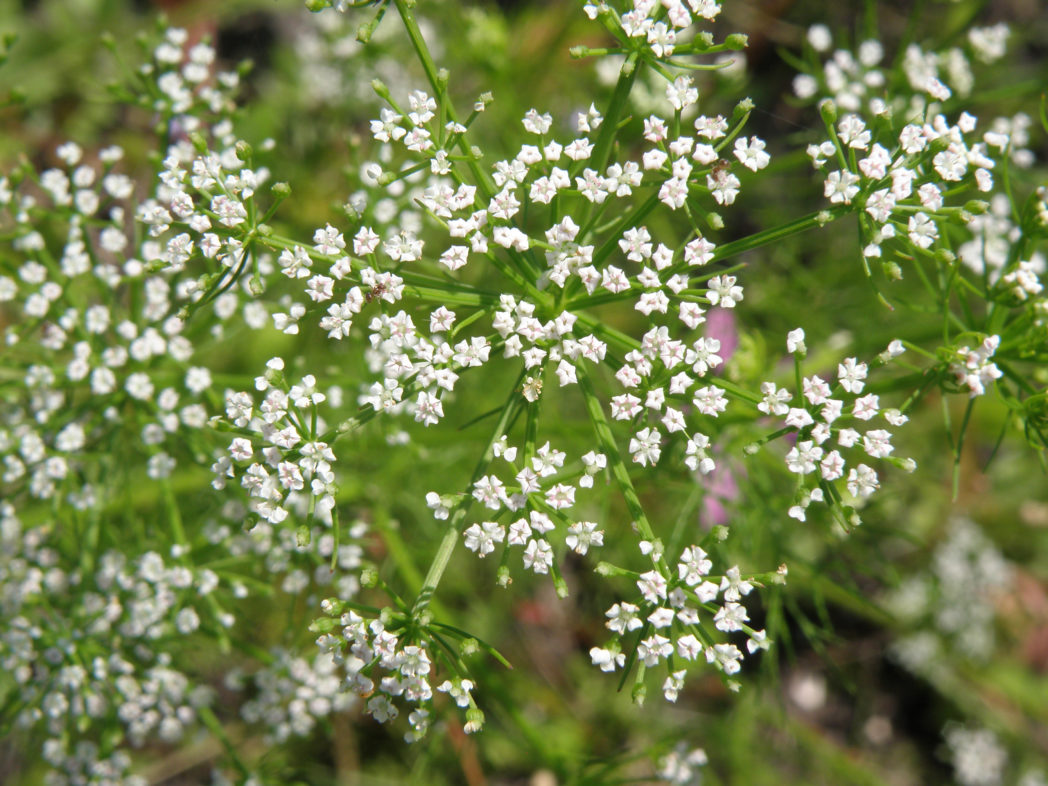Mock bishopsweed
Pictured above: Mock bishopsweed (Ptilimnium capillaceum) by Stacey Matrazzo. Click on terms for botanical definitions. View post as a PDF.
Mock bishopsweed (Ptilimnium capillaceum) is a delicate little annual that is too often disregarded as a weed. But despite its small stature, it is both attractive and ecologically beneficial, especially when it occurs in mass. Its many dainty white flowers are born in compound umbels that are encircled at their base by threadlike bracts. Though the flowers are tiny, the nectar is easily accessible to many pollinators, including flies and wasps. It is also a larval host for the Black swallowtail (Papilio polyxenes) butterfly. Its leaves are compound with finely dissected leaflets, giving it a thin, wispy appearance (see photo below). Stems are slender, hollow and branched. Seeds are ovoid and less than 1/8” long.

Mock bishopsweed typically blooms in spring and summer. It occurs naturally in swamps, marshes, coastal swales, ditches and along pond edges.
Like most members of the Apiaceae family, mock bishopsweed has a long taproot, which helps the plants survive “hazards” such as drought and being eaten by black swallowtail caterpillars.
Family: Apiaceae (Umbelliferae, celery, carrot or parsley family)
Native range: Nearly throughout Florida
To see where natural populations of mock bishopsweed have been vouchered, visit www.florida.plantatlas.usf.edu.
Hardiness: 8A–11
Soil: Moist to wet soils
Exposure: Full sun
Growth habit: 12–18”
Propagation: Seed
Garden tips: Mock bishopsweed usually volunteers itself into a landscape, particularly in sites that are wet or watered regularly. It is a prolific self-seeder, so be sure to thin it out before it goes to seed as it can take over if you allow it.
Mock bishopsweed plants are occasionally available from nurseries that specialize in Florida native plants. Visit www.PlantRealFlorida.org to find a nursery in your area.

